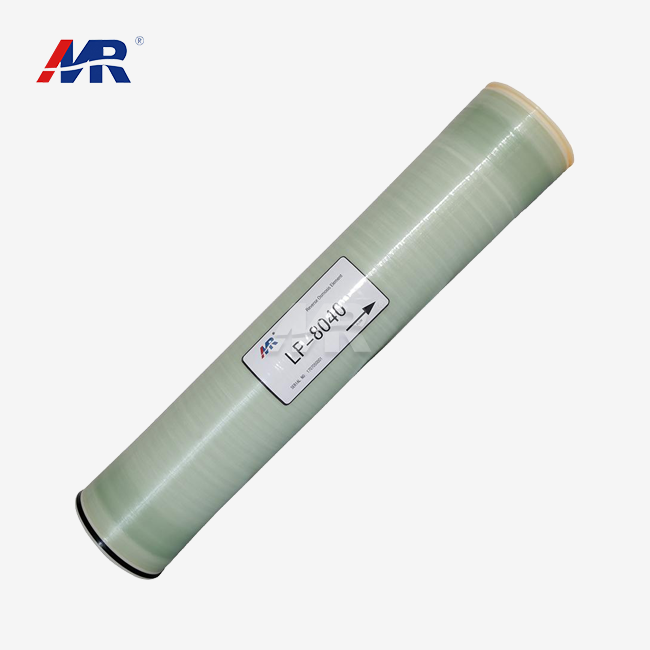Industrial Applications: Beyond Drinking Water
While reverse osmosis is widely recognized for its role in producing clean drinking water, its applications extend far beyond this crucial function. In the industrial sector, RO membranes have become integral to numerous processes, revolutionizing water treatment across various industries.
Food and Beverage Production
In the food and beverage industry, reverse osmosis plays a pivotal role in ensuring product quality and consistency. Manufacturers utilize RO systems to purify water used in production processes, remove impurities that could affect taste or appearance, and concentrate fruit juices and other liquid products. The technology's ability to remove dissolved solids and contaminants makes it indispensable for producing high-quality beverages, from soft drinks to premium bottled water.
Pharmaceutical Manufacturing
The pharmaceutical industry relies heavily on ultrapure water for drug formulation, equipment cleaning, and sterilization processes. Reverse osmosis membranes are crucial in producing water that meets stringent purity standards, ensuring the safety and efficacy of medications. By removing potential contaminants, including bacteria, endotoxins, and dissolved minerals, RO systems help maintain the integrity of pharmaceutical products and comply with regulatory requirements.
Power Generation
In power plants, particularly thermal and nuclear facilities, water quality is paramount for efficient operation and equipment longevity. Reverse osmosis systems are employed to treat boiler feed water, removing impurities that could cause scaling, corrosion, or fouling in steam turbines and heat exchangers. This application not only enhances energy efficiency but also reduces maintenance costs and extends the lifespan of critical equipment.
Electronics Manufacturing
The electronics industry demands extraordinarily pure water for semiconductor fabrication and other precision manufacturing processes. Reverse osmosis, often combined with other purification technologies, produces ultrapure water essential for cleaning silicon wafers, rinsing components, and preventing contamination that could compromise the integrity of electronic devices.
RO's Impact on Global Water Scarcity
As the world grapples with increasing water scarcity, reverse osmosis technology has emerged as a powerful tool in addressing this global challenge. The versatility and efficiency of RO membranes make them instrumental in developing sustainable water solutions across various regions and scenarios.
Seawater Desalination
One of the most significant contributions of reverse osmosis to combating water scarcity is its application in seawater desalination. Coastal regions with limited freshwater resources are increasingly turning to RO-based desalination plants to convert seawater into potable water. This technology has made it possible to provide clean drinking water to millions of people in water-stressed areas, offering a reliable alternative to traditional freshwater sources.
Wastewater Reclamation
Reverse osmosis plays a crucial role in wastewater reclamation and reuse initiatives. By treating municipal and industrial wastewater to high purity levels, RO systems enable the recycling of water for non-potable uses such as irrigation, industrial processes, and groundwater recharge. This approach not only conserves freshwater resources but also reduces the environmental impact of wastewater discharge.
Brackish Water Treatment
In regions where groundwater is brackish or contaminated, reverse osmosis offers a viable solution for producing clean water. By effectively removing salts and other dissolved solids, RO membranes can transform brackish water into a usable resource for agriculture, industry, and even drinking water supply, expanding access to water in areas previously considered water-scarce.
Humanitarian Aid and Disaster Relief
Portable reverse osmosis systems have become invaluable tools in humanitarian aid and disaster relief efforts. These compact units can quickly provide safe drinking water in emergency situations, such as natural disasters or refugee crises, where access to clean water is critical for survival and preventing the spread of waterborne diseases.
Case Studies: Successful Large-Scale RO Projects
The effectiveness of reverse osmosis in addressing water challenges is best illustrated through real-world applications. Several large-scale projects around the globe demonstrate the transformative power of RO membrane technology in diverse environments.
The Sorek Desalination Plant, Israel
Israel's Sorek Desalination Plant stands as a testament to the potential of reverse osmosis in large-scale seawater desalination. As one of the world's largest and most advanced desalination facilities, it employs state-of-the-art RO technology to produce up to 627,000 cubic meters of potable water daily. This project has significantly contributed to Israel's water security, providing approximately 20% of the country's municipal water demand and showcasing the viability of RO desalination as a sustainable water source for arid regions.
Orange County Water District's Groundwater Replenishment System, USA
In California, the Orange County Water District's Groundwater Replenishment System exemplifies the use of reverse osmosis in advanced water recycling. This innovative project purifies wastewater to near-distilled quality using a multi-step process that includes RO treatment. The purified water is then used to recharge groundwater aquifers, creating a sustainable and drought-resistant water supply for the region. This approach not only conserves water but also provides a barrier against seawater intrusion into coastal aquifers.
NEWater, Singapore
Singapore's NEWater initiative is a pioneering example of using reverse osmosis for large-scale water reclamation. Through a comprehensive treatment process that includes RO, treated wastewater is purified to exceptionally high standards, suitable for both industrial use and indirect potable reuse. NEWater now meets up to 40% of Singapore's water needs, significantly reducing the country's dependence on imported water and enhancing its water security.
Carlsbad Desalination Plant, USA
The Claude "Bud" Lewis Carlsbad Desalination Plant in California is another notable example of large-scale RO application. As the largest seawater desalination plant in the Americas, it uses reverse osmosis technology to produce up to 50 million gallons of drinking water per day, supplying approximately 10% of San Diego County's water needs. This project demonstrates how RO can be effectively integrated into a region's water supply strategy to enhance resilience against drought and water shortages.
These case studies underscore the transformative potential of reverse osmosis technology in addressing diverse water challenges. From arid coastal regions to water-stressed urban areas, RO membranes are proving to be a versatile and effective solution for ensuring sustainable water supplies.
Conclusion
Reverse osmosis membranes have indeed proven to be a game-changer in water treatment, offering innovative solutions to some of the world's most pressing water challenges. From industrial applications and addressing global water scarcity to enabling large-scale projects that transform water accessibility, RO technology continues to evolve and expand its impact. As we face increasing pressures on our water resources, the role of reverse osmosis in ensuring sustainable, high-quality water supplies becomes ever more critical.
For businesses and organizations looking to leverage the power of reverse osmosis technology, partnering with a trusted expert is key. Guangdong Morui Environmental Technology Co., Ltd specializes in cutting-edge water treatment solutions, including state-of-the-art reverse osmosis systems. Our comprehensive range of services covers industrial wastewater treatment, domestic sewage processing, seawater desalination, and drinking water production. With our own membrane production facilities and equipment processing factories, we offer not just products but complete, tailored solutions to meet your specific water treatment needs.
Whether you're in manufacturing, food and beverage production, pharmaceuticals, or any industry requiring high-purity water, our team of expert engineers and technicians is ready to design and implement the perfect RO system for your requirements. We pride ourselves on providing not just equipment, but a full suite of services including installation, commissioning, and ongoing support to ensure your water treatment systems operate at peak efficiency.
Take the first step towards optimizing your water treatment processes with Guangdong Morui Environmental Technology Co., Ltd. For more information on our reverse osmosis membranes and comprehensive water treatment solutions, please contact us at benson@guangdongmorui.com. Let us help you harness the power of RO technology to transform your water management strategies and contribute to a more sustainable future.
References
1. Greenlee, L. F., et al. (2009). Reverse osmosis desalination: Water sources, technology, and today's challenges. Water Research, 43(9), 2317-2348.
2. Fritzmann, C., et al. (2007). State-of-the-art of reverse osmosis desalination. Desalination, 216(1-3), 1-76.
3. Elimelech, M., & Phillip, W. A. (2011). The future of seawater desalination: Energy, technology, and the environment. Science, 333(6043), 712-717.
4. Ghaffour, N., et al. (2013). Technical review and evaluation of the economics of water desalination: Current and future challenges for better water supply sustainability. Desalination, 309, 197-207.
5. Lee, K. P., et al. (2011). A review of reverse osmosis membrane materials for desalination—Development to date and future potential. Journal of Membrane Science, 370(1-2), 1-22.
6. Shaffer, D. L., et al. (2012). Seawater desalination for agriculture by integrated forward and reverse osmosis: Improved product water quality for potentially less energy. Journal of Membrane Science, 415-416, 1-8.

_1745823981883.webp)


